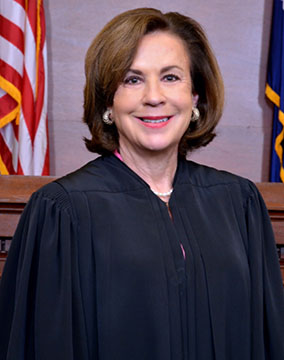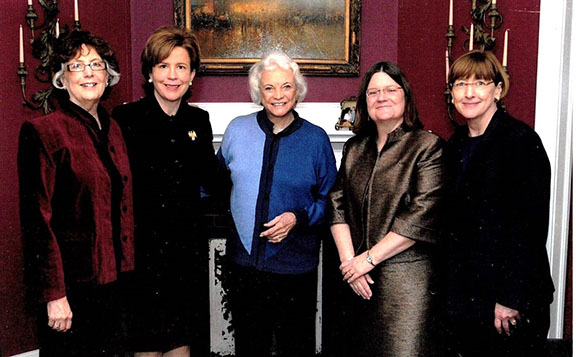Reflections of Missouri Chief Justice Mary R. Russell
We lost a true American legal legend when Sandra Day O’Connor died December 1. Many headlines announcing her death focused on her status as a “first” – specifically, the first woman appointed to the Supreme Court of the United States. While this fact is significant, it fails to encapsulate the true legacy Justice O’Connor leaves behind.

Part of her legacy is tangible, reflecting not only her sharp legal mind but also her unwavering commitment to the rule of law on which our nation was built. I was honored to meet her on several occasions, including at events in Kansas City and Columbia. Each time, she stressed the importance of preserving merit selection for judges – including our Missouri nonpartisan court plan – which she saw as integral to ensuring fair and impartial courts, free to uphold the rule of law without undue influence of money or politics. Her legacy also continues through the many programs she founded, designed to enhance civics education, foster civic engagement, and promote civil discourse.
But so much more of her legacy is intangible, reflected in the dreams and accomplishments of vast numbers of women for whom she served as a role
model. I am one of them, and I know scores of other women whose pathways into the legal profession were paved by Justice O’Connor.
When she was appointed to the Supreme Court in 1981, I was one of a small group of women some 1,300 miles away at the University of Missouri-Columbia School of Law. We celebrated as Justice O’Connor was nominated, unanimously confirmed and sworn in as the nation’s first female justice. In just a few brief months, she became the inspiration of my entire generation of female attorneys. She gave us the hope and confidence that there was a place for us in the legal profession. She broke the glass ceiling and paved the way for women to become not only judges but leaders across the profession, in law firms and in government. And, in my experiences with her, she was unfailingly kind and gracious to those she encountered.
When she graduated from law school in 1952, ranked third in her class – just two spots behind her future colleague, Chief Justice William Rehnquist – no law firm would interview her, explaining they didn’t hire women attorneys. But Justice O’Connor persevered, working in government practice, in private practice and serving in the Arizona state senate. Her judicial career began in 1975, first as a trial judge in Phoenix, then as an Arizona appellate judge and, ultimately, on our nation’s highest court.
It would be the late 1980s before Missouri got its first female judge on the appellate court and then state supreme court. Like Justice O’Connor, our own Ann Covington is a woman who never sought the limelight but whose quiet strength, wisdom, dignity and grace commands respect from the entire legal community. When I became the third woman ever appointed to the Court 15 years later, I found myself wondering when we might stop counting … when the idea of a woman serving on a state supreme court would be so accepted that we might shift our focus from gender to all of the attributes that make us individuals.
Reflecting on Justice O’Connor’s life and legacy, I think perhaps that time has come. Gone are the days when a female attorney would find herself the only woman in the room or at the table. Now, more than a third of all Missouri lawyers are women. Women are prevalent in leadership positions as well, at law firms big and small, in nonprofit organizations, and on the bench. All three officers and the executive director of The Missouri Bar are women. Since 2017, the clerk of our Court – basically our judicial branch CEO – has been a woman. And this fall, for the first time in history, with the back-to-back appointments of Judge Kelly Broniec and Judge Ginger Gooch joining Judge Robin Ransom and myself, women now constitute a majority on our Court.
We celebrated that historic moment last month as we gathered with the three women who came before us – Judge Ann Covington, Judge Laura Denvir Stith and Judge Patricia Breckenridge – and our male colleagues as well. I find it nearly impossible to adequately describe the multitude of emotions I have been feeling.
So perhaps I should close, not with my own words but those of Justice O’Connor as she addressed a “Women in Power” conference held in 1990 at Washington University in St. Louis: “As women achieve power, the barriers will fall. As society sees what women can do, as women see what women can do, there will be more women out there doing things, and we’ll all be better off for it.”

United States Supreme Court Associate Justice Sandra Day O’Connor (center) meets with Supreme Court of Missouri judges (from left) Ann K. Covington, Mary R. Russell, Laura Denvir Stith and Patricia Breckenridge in February 2009 during a symposium held at the University of Missouri-Columbia. (Photo courtesy of Judge Mary R. Russell)
